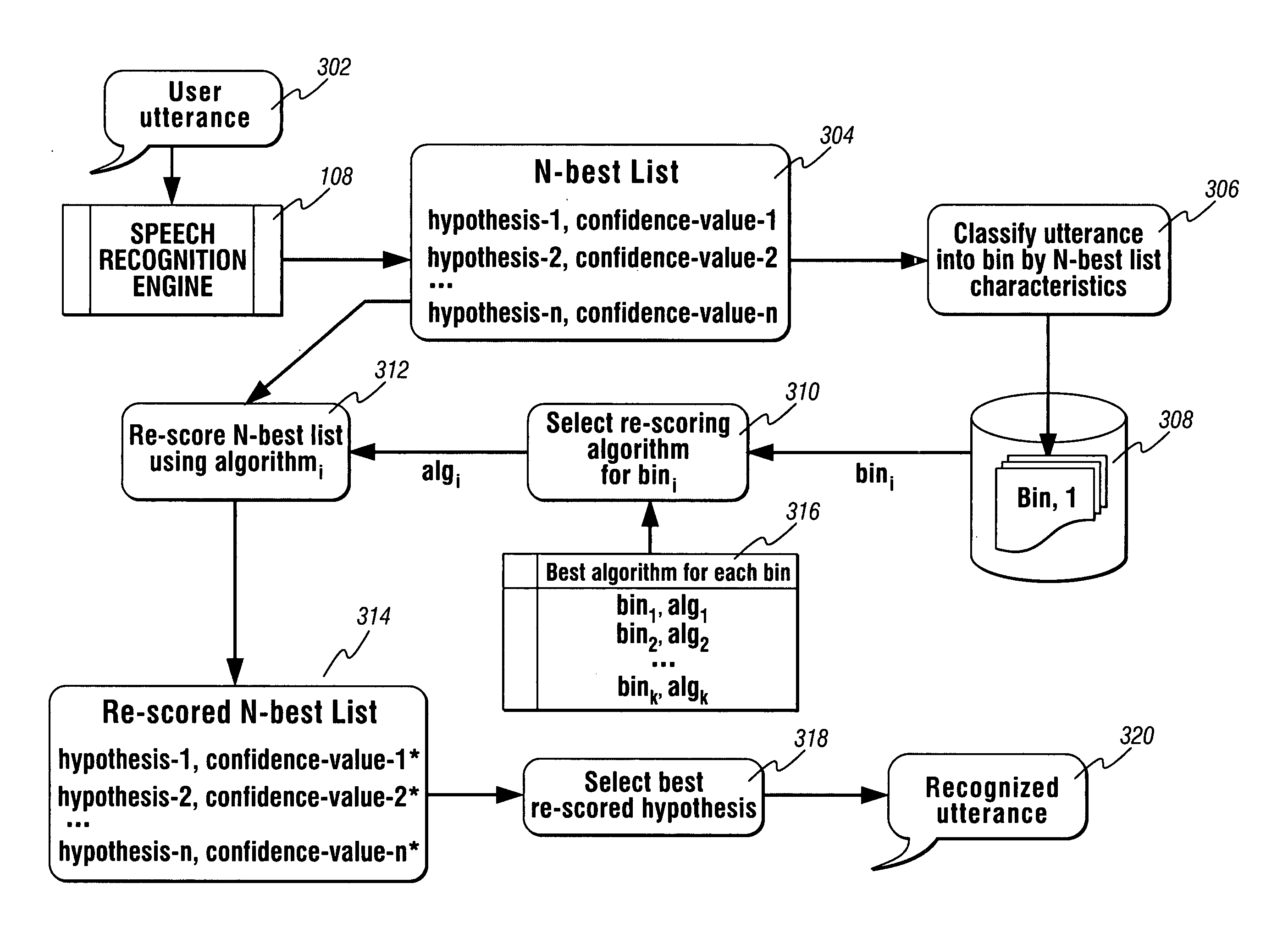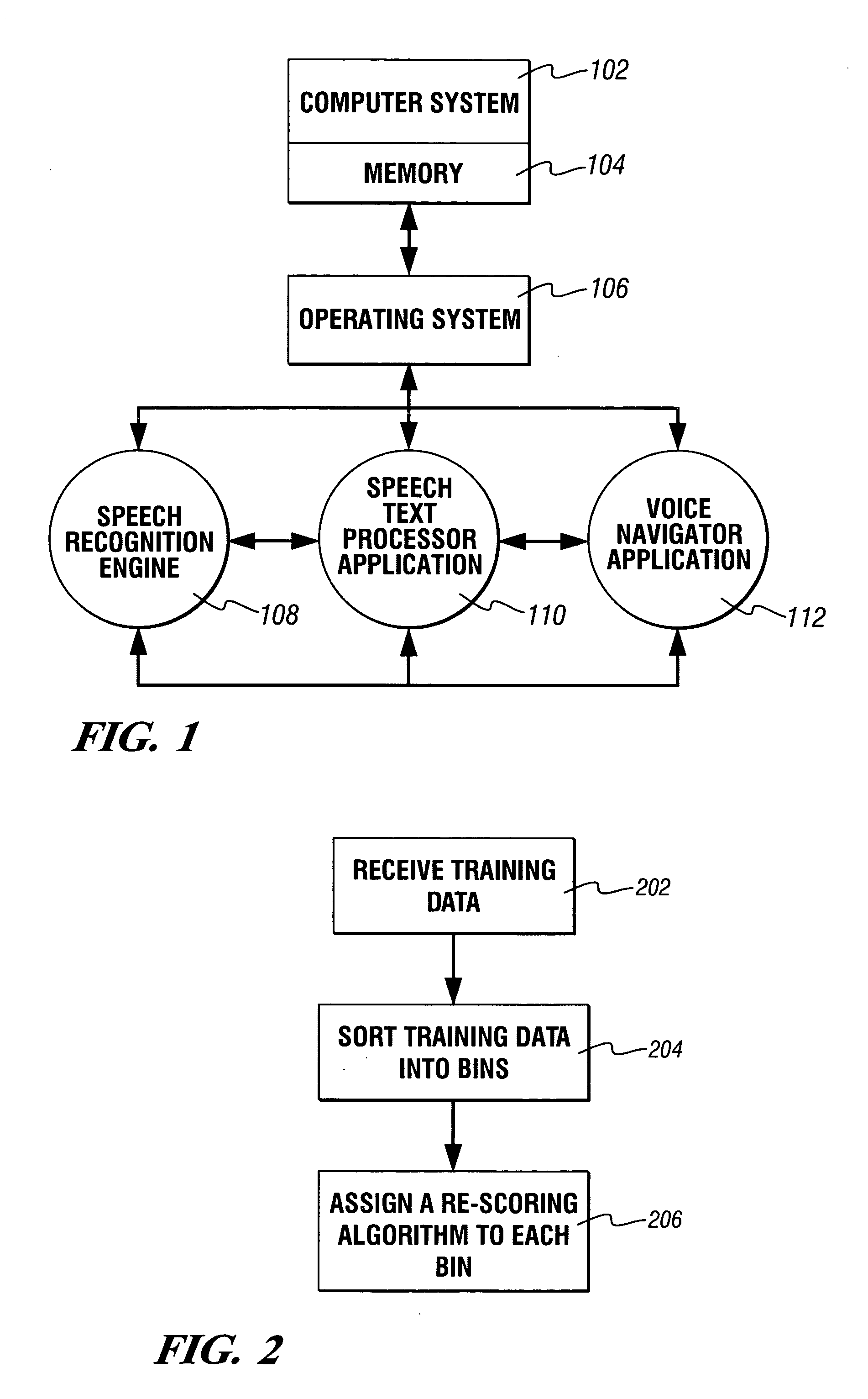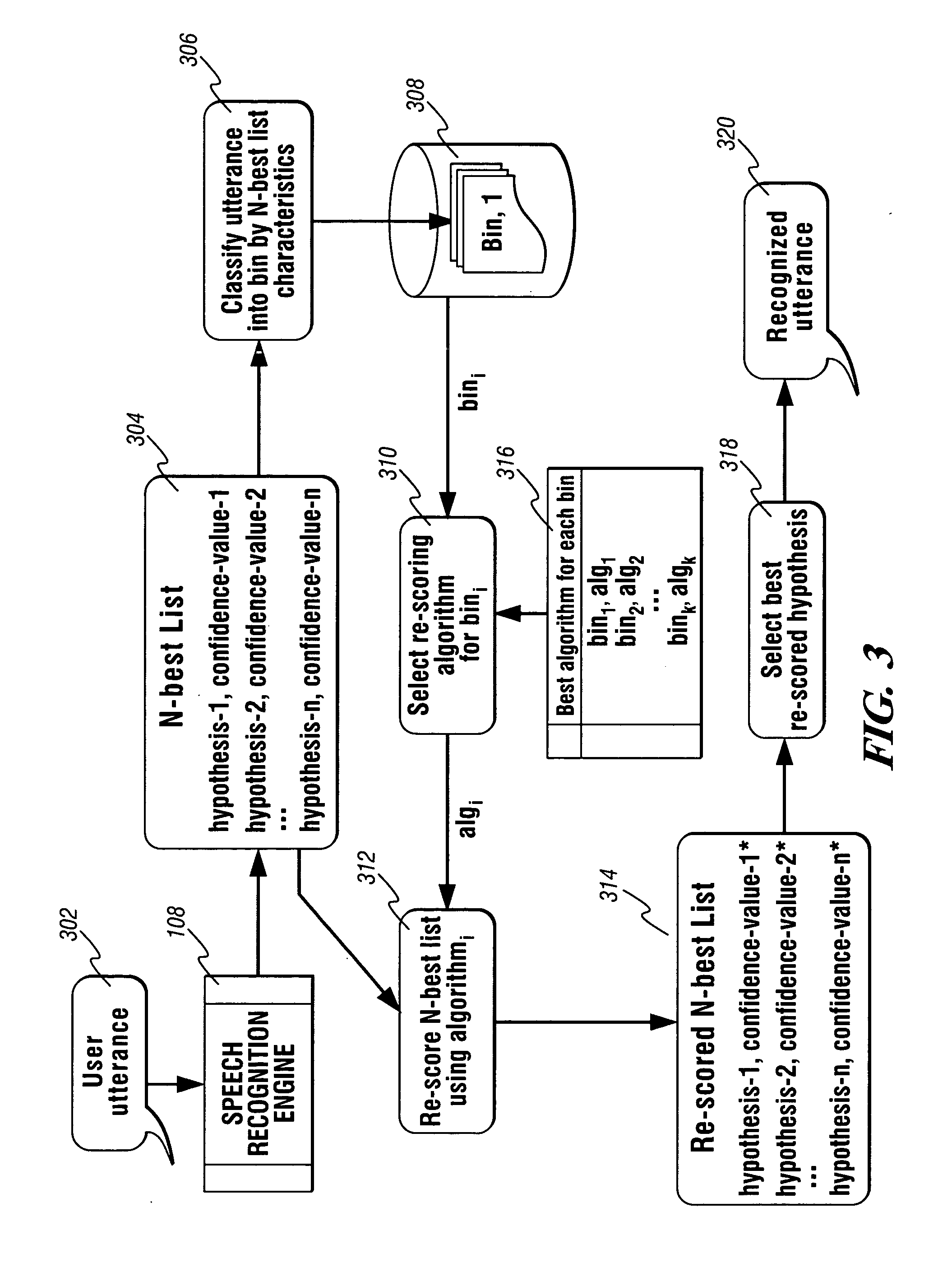Dynamic N-best algorithm to reduce recognition errors
a technology of recognition errors and best algorithms, applied in the field of dynamic nbest algorithms, can solve the problems of user inability to reasonably expect to memorize some arbitrary list of proxies, difficulty in recognizing individual letters or numbers, and difficulty in recognizing the names of alphabetic letters, etc., to achieve the effect of increasing recognition accuracy and increasing recognition accuracy
- Summary
- Abstract
- Description
- Claims
- Application Information
AI Technical Summary
Benefits of technology
Problems solved by technology
Method used
Image
Examples
Embodiment Construction
[0016] A method for reducing the rate of errors produced by a recognition engine is presented. This method is applicable to any recognition engine that produces N-best lists with associated confidence values. Examples include systems such as: speech recognition systems, optical character recognition systems, image recognition systems, handwriting recognition systems and fingerprint recognition systems. One such recognition engine, a speech recognition system, returns hypotheses about the user's utterance in the form of an N-best list that consists of utterance hypotheses paired with numeric confidence values representing the recognition engine's assessment of the correctness of each hypothesis. Default system behavior is to select the hypothesis with the highest confidence value as the representation of the user's utterance. A misrecognition occurs when the user's actual utterance is other than this default selection (i.e., the hypothesis is not at the top of the N-best list). A var...
PUM
 Login to View More
Login to View More Abstract
Description
Claims
Application Information
 Login to View More
Login to View More - R&D
- Intellectual Property
- Life Sciences
- Materials
- Tech Scout
- Unparalleled Data Quality
- Higher Quality Content
- 60% Fewer Hallucinations
Browse by: Latest US Patents, China's latest patents, Technical Efficacy Thesaurus, Application Domain, Technology Topic, Popular Technical Reports.
© 2025 PatSnap. All rights reserved.Legal|Privacy policy|Modern Slavery Act Transparency Statement|Sitemap|About US| Contact US: help@patsnap.com



